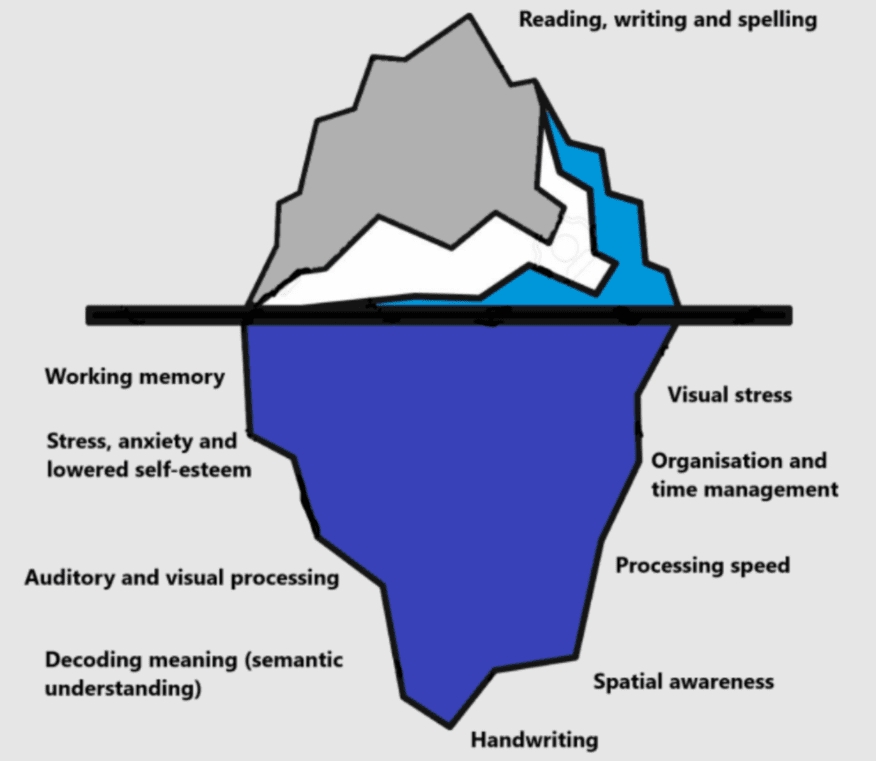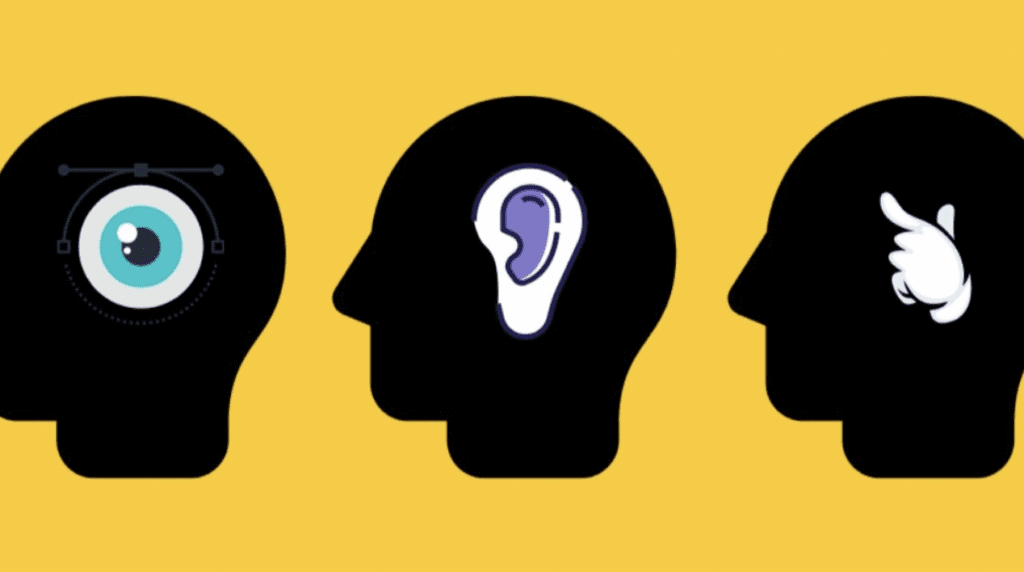Dyslexia is a common condition. But as common as it is, it also varies greatly from person to person. How it manifests in dyslexic individuals and how that manifestation affects academics and other areas of life widely differs. The “dyslexia iceberg” analogy visually represents the “obvious” traits that many (not all!) dyslexics share, as well as the “hidden” traits they may have as well.

image source: https://blog.dyslexia.com/the-dyslexic-iceberg/
Visible vs. Invisible Traits
The top of an iceberg is visible to all. You can see it clearly without obstruction or distortion. In the dyslexia iceberg, those visible traits are difficulty with reading, writing, and spelling. The rest of the iceberg is submerged, so we can’t see it. Any small glimmer that we can see beneath the surface is distorted by the water, showing us an altered version of what is really there. Under the surface of the dyslexic iceberg are the following areas:
working memory
stress, anxiety, low self-esteem
auditory processing
decoding meaning (semantic understanding)
visual stress
organization and time management
processing speed
spatial awareness
handwriting
For some individuals with dyslexia, the hidden areas above are also areas in which they struggle, but those areas are a lot harder to identify. Not all of these areas are deficient in all dyslexics. You may have two people with dyslexia who struggle with completely different areas. You may even find that one person struggles with one area only in certain contexts or under certain conditions.
All these differences and variations in people with dyslexia just go to show how very different the neurodiversity can be from one person to the next. Many of us have a specific image or definition of what it means to be dyslexic. But chances are, that definition does not apply to all that many people with dyslexia.eur




